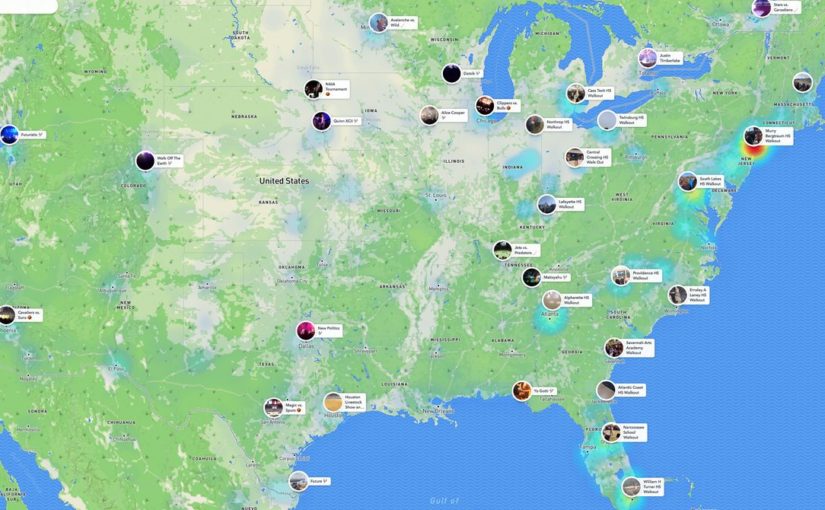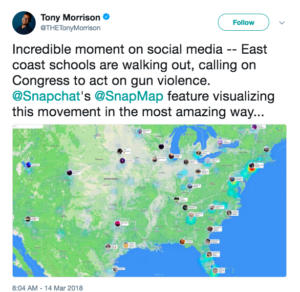Abstract
Those with impeccable taste and a wardrobe to match are reaping the rewards with an abundance of clothing rental platforms and communities surfacing online. Similar to other peer-to-peer clothing rental platforms like ClosetDrop, Rent the Runway or Curtsy app, Clothes for Rent Perth is a Facebook group that has been created to form a community around clothing items or accoutrements for rent, assisting others search for the perfect outfit. This paper analyses the role of trust in Web 2.0 communities, particularly online fashion communities, integrating the concepts of social network theory and social capital. The paper proceeds as follows. The first section introduces the concept of social capital and trust. Then, an attempt at defining communities and virtual communities is presented and the theory of the blackboard model of mediated community is adopted. Subsequently, the argument that trust, as an element of social capital, is integral to the success of online fashion communities like Clothes for Rent Peth is entrenched in the discussion of Web 2.0, social networking sites (SNS) and communities. The adequacy and relevance of sources from the literature on the identified concepts are presented throughout the paper.
Keywords: online fashion communities, Web 2.0, social networks, social capital, trust
Forming Friendships Through Online Fashion Communities
Founded by sole admin/moderator Madeline Taylor – co-owner of ClosetDrop, another peer-to-peer clothing rental platform – Clothes for Rent Perth is a Facebook community that allows for greater accessibility to fashion in a cost-effective manner. Although the concept of renting clothes is not new, peer-to-peer service models have disrupted the industry as items are exchanged directly from loaners to renters, removing the need for physical retailers. As such, Clothes for Rent Perth has no brick-and-mortar stores and exclusively operates online. With more than 6,500 members to date, Clothes for Rent Perth has established a niche audience among young women in Perth, Western Australia. The thriving sharing economy enables Australians to make a profit from their existing investments, and Madeline is merging fashion technology and the sharing economy to distinguish her businesses in the competitive market. Clothing rental platforms have become extremely popular on a global scale and while alternate Clothes for Rent Facebook groups exist based on geographical location, for the purpose of this paper Clothes for Rent Perth will be the focus. The success of clothing rental platforms and communities is attributed to the nature of Web 2.0 (collaborative and community-oriented) and its tools such as SNSs like Facebook. With reference to Clothes for Rent Perth, this paper explores trust as an element of social capital, arguing the necessity of such for online fashion communities to flourish.
Social Capital and Trust in Online Social Networking Sites
Social capital has a prominent place in the literature of a variety of disciplines including but not limited to economics, sociology and political science (see Engbers, Thompson & Slaper, 2017, pp. 537, 538). Social capital can be viewed as “An umbrella theory that brings together such concepts of social networks, trust, social exchange, social resources, embeddedness, and social support” (Grabner-Kräuter, 2009, p. 510). Grabner-Kräuter (2009) states, “Despite the conceptual confusion surrounding social capital, most researchers agree that social capital refers to investment in personal relationships or social structure that facilitates the achievement of individual or collective goals” (Glanville & Bienstock, as cited in Grabner-Kräuter, 2009, p. 510). Most of Engbers et al. (2017) recent scholarship traces the contested origin of social capital to Coleman’s (1988) treatise on Social Capital in the Creation of Human Capital (p. 538). Coleman (1988) states that:
“Social capital is defined by its function. It is not a single entity but a variety of different entities, with two elements in common: they all consist of some aspect of social structures, and they facilitate certain actions of actors – whether persons or corporate actors – within the structure” (Coleman, 1988, p. 98).
Although Coleman’s work is said to have established social capital, the conceptual understanding and the diverse quantification of the concept flourished with the publication of Robert Putnam’s Bowling Alone in 2000 (Engbers et al., 2017, p. 538). Grabner-Kräuter (2009) states, “Putnam’s definition represents a synthesis of the network and trust views of social capital: ‘the core idea of social capital is that social networks have a value… social contacts affect the productivity of individuals and groups’” (Putnam, as cited in Grabner-Kräuter, 2009, p. 510). One of the key categories explored in relation to social capital is trust. Best stated by Wellman et al., SNS members “Tend to trust strangers, much as people gave rides to hitchhikers in the flowerchild days of the 1960s” (as cited in Grabner-Kräuter, 2009, p. 511).
For communities like Clothes for Rent Perth to operate effectively, a great deal of trust is required on the behalf of members. With Madeline as owner, Clothes for Rent Perth functions similarly to ClosetDrop. Therefore, as stated on ClosetDrop (2018), it is at the discretion of members to make contact, negotiate prices, pick-up and return options. So, what happens if an accident occurs and red wine is spilt on a favourite white dress, or a pair of jeans are returned with a split? The moral philosopher Annette Baier presented a valuable starting point in defining trust, suggesting “We trust when we are vulnerable to harm from other yet believe these others would not harm us even though they could” (Friedman, Kahn & Howe, 2000, p. 34). Members of clothing rental platforms are vulnerable, however, being a location-based service, many Clothes for Rent Perth members have ties (predominantly weak) or “friends” within the group which reassures trust. Furthermore, the members of Clothes for Rent Perth are dependent on each other for desired outcomes, thus as active members become familiar over time and share positive experiences, the level of trust is heightened within the community.
Communities in an Offline and Online Context
There is no singular definition of community. Traditionally, communities referred to a group of people occupying a shared location and although this is historically accurate, for many, locality is no longer a key definer of fellowship. While people are born into allocated communities, nowadays communities can also be initiated or selected by individuals themselves due to the ease and accessibility of such enabled by the Internet and Web 2.0. The term community is also used to describe “The condition of sharing or having certain attitudes and/ or interests in common with others” (“community | Definition of community in English by Oxford Dictionaries”, n.d.). In both instances, communities are framed as valuable, positive entities that offer an experience of ‘togetherness’ and sense of ‘belonging’. As stated by Forman, Kern and Gil-Egui (2012) “Communities are constantly shifting, merging, and redefining themselves”.
What once was an offline activity that required very little association with others, renting clothes has been introduced online and services like Clothes for Rent Perth encourage communication, connection and collaboration with others to achieve collective goals – shifting, redefining and merging the renting community. Discussions of the online environment often involve communities. Leal, Hor-Meyell and de Paula Pessôa (2014) define virtual communities as “Social aggregations on the Internet…where individuals conduct public discourse for a period of time and with a certain degree of involvement” (p. 883). Mirroring contemporary offline communities, they are “Constructed around a common interest, experience, or task that members have, and guided by both explicit and implicit codes of conduct” (Hagel & Armstrong, as cited in Leal, Hor-Meyll & de Paula Pessôa, 2014, p. 883). These individuals form networks that “Provide friendship, information, belongingness and social resources to each other” (Wang et al., as cited in Leal, Hor-Meyll & de Paula Pessôa, 2014, p. 883). The Clothes for Rent Perth community provides these elements through the renting process. While many members have associations or friends within the group, the opportunity remains to establish new relations with others by providing information and social resources. Additionally, these elements are linked to social capital.
As aforementioned, communities can be developed upon common interests, many of which are related to purchases (Leal, Hor-Meyll & de Paula Pessôa, 2014, p. 882). Aguiton and Cardon (2007) discuss the blackboard model of mediated community based on Michel Gensollen’s (2003, 2006) research. Gensollen underlined that “Virtual communities have a blackboard structure when they are organized to share experience between consumers” (Aguiton & Cardon, 2007, p. 53). A blackboard structure is indicated for Clothes for Rent Perth as the community functions on the premise of positive experiences both with loaners and their “products”. Members of the Clothes for Rent Perth community can only develop an instrumental intimacy between them and are connected by very weak ties as they purely interact for the purpose of exchanges (outfits for money and vice versa) (Aguiton and Cardon, 2007, p. 53). True for Clothes for Rent Perth, “The organisation of exchanges doesn’t require strong involvement of the whole community, but a cluster of very active participants can lead the community in producing a lot of external effects” (Aguiton & Cardon, 2007, p. 56).
Web 2.0 and Communities
Intended to distinguish activities from traditional static and passive Web pages, the popular term Web 2.0 denotes a modernised version of the Web. As stated by Grabner-Kräuter (2009), “The essential difference between Web 2.0 and the traditional Web is that content is user-generated, and there is considerably more collaboration amongst Internet users” (p. 505). The definition of Web 2.0 has been subject to much refinement over the years. Tim O’Reilly is credited with the seminal work on Web 2.0 and is said to offer the most comprehensive definition of this phenomenon, stressing network effects that arise from vast user participation and collective intelligence as significant features of Web 2.0 (Fuchs, 2010, p. 775; O’Reilly, 2005). While a literature review by Fuchs (2010) determines that several authors have developed similar concepts of Web 2.0 as a platform for cooperation (p. 776), Fuchs (2010) discussion of the concept as focused on the notions of online communication, community-formation, and collaboration (p. 766) is more applicable to this paper.
Fuchs (2010) outlines three evolutionary levels of Internet development, defining “Web 1.0 as a tool for human communication, Web 2.0 as a medium for human communication, and Web 3.0 as networked digital technologies that support human cooperation” (p. 767). This demonstrates that the highly interactive technologies of Web 2.0 and beyond have shifted the platform from a systems-oriented model to a user-focus model. Furthermore, Fuchs (2010) suggests that “What is today designated as “Web 2.0” functions both as ideology and realm of commodification” (p. 767) – particularly applicable to Clothes for Rent Perth. “Web 2.0 functions as ideology in a threefold sense: as marketing ideology, as neoliberal ideology, and as political ideology. A second aspect…is that it also has an economic function that is supported by the ideological components” (Fuchs, 2010, p. 768). Communities like Clothes for Rent Perth “Constitute an audience commodity that is then sold to advertisers” (Fuchs, 2010, p. 768). Such is derived from users being content producers (user-generated content), whereby members can upload or browse media, or accrue friends with whom they exchange content or communicate online on SNSs like Facebook. Facebook is a friendship-oriented network – the SNS emphasises staying in touch with and/or reconnecting with people (Grabner-Kräuter, 2009, p. 507). As one of the most popular SNSs with more than 2.13 billion monthly active users for the fourth quarter of 2017 (Facebook, 2018), Facebook transcends barriers to bring users together.
Social Networks and Communities
Web 2.0 application, online SNSs or virtual communities, have enabled potential for “Rich, online human-to-human interaction unprecedented in the history of Internet communication” (Grabner-Kräuter, 2009, p. 505). Fuchs (2010) states that “The usage of community-functions provided by social networking platforms has been rising during the past few years” (p. 771). SNSs utilise mobile and web-based technologies to establish highly interactive platforms that support users to:
“(1) construct a public or semi-public profile… (2) articulate a list of other users with whom they share a connection and (3) view and traverse their list of connections and those made by others within the system” (boyd & Ellison, 2008, p. 211).
This definition implies that users are linked in some respect, regardless of the strength of social ties (Lange, as cited in Grabner-Kräuter, 2009, p. 507). boyd and Ellison (2008) state “While SNSs have implemented a wide variety of technical features, their backbone consists of visible profiles that display an articulated list of friends who are also users of the system” (p. 211). “Much of Web 2.0 is based upon – or actually built upon – increased personal information flows online” (Zimmer, as cited in Grabner-Kräuter, 2009, p. 505). Upon joining an SNS, users are asked to fill in the required information to generate a profile for themselves. Evidence from many SNSs indicate that millions of users do not hesitate to share personal information or content online, despite the risks related to privacy or security issues on SNSs (Grabner-Kräuter, 2009, p. 506). In fact, “Users actually tend to trust other community members with expertise, identity, personal information, and even money lending. Users also tend to trust providers of social network sites to keep their information and photos private” (Lai & Turban, as cited in Grabner-Kräuter, 2009, p. 506). Therefore, “Social networking obviously takes place within a (largely unwarranted) context of trust” (Grabner-Kräuter, 2009, p. 506). Consequently, questions arise regarding why social networking users are so trusting.
The public display of profiles and connections is a crucial component of SNSs as this information can determine membership to a virtual community. Clothes for Rent Perth is discoverable but closed (private) community to the general public. Membership requires a user request to join and approval by the admin, Madeline. Assumedly, Madeline views the requesting user’s profile to determine whether membership is reasonable based on factors like profile picture, age, and geographical location. Most SNSs also provide a mechanism for users to leave comments or messages both publicly, on another’s profile (depending on personal user settings), and privately in direct messages (Boyd & Ellison, 2008, p. 213). Profiles enable discovery of others in the system with whom they have a relationship – acquaintances, friends, and followers (Boyd & Ellison, 2008, p. 213). “The term “friends” can be misleading as the connection does not necessarily mean friendship in the everyday vernacular sense, and the reasons people connect are varied” (Boyd, as cited in Boyd & Ellison, 2008, p. 213).
Network ties like friendships formed in communities are closely related to social capital theory, “Adopting a social network approach to the analysis of trust involves the assumption that individual actors are embedded within a network of relationships” (Jones, as cited in Grabner-Kräuter, 2009, p. 511). Granovetter (1992) describes embeddedness as “The influence of the network on its members’ behaviour,” and suggests that “Being embedded in cohesive networks accelerates the creation of trust. The cohesiveness of the network structure, where a specific relationship is embedded, facilitates the circulation of information about parties’ reputation and the socialization of common behaviour” (Grabner-Kräuter, 2009, p. 511). Therefore, the behaviour of community members is determined by the prevalent characteristics of its network (Grabner-Kräuter, 2009, p. 511). This explains the role of trust in the Clothes for Rent community, if all members behave ethically, a person behaving opportunistically will feel guilty in doing so (Ganzaroli, as cited in Grabner-Kräuter, 2009, p. 511)
As detailed, the affordances of SNSs provide a rich environment where social capital can be developed and refined (Burke, Kraut & Marlow, as cited in Lee, 2017, p. 1069).
Conclusion
“The relationship amongst the concepts of social networks, social capital and trust is far from conclusive” (Grabner-Kräuter, 2009, p. 510), and this paper contributes to an ongoing dialogue regarding these concepts. It is an attempt at a conceptual understanding of the role of trust in Web 2.0 communities, particularly online fashion communities, and the relevance of trust and social capital in SNSs. This paper argues that trust, as an element of social capital, is necessary for online fashion communities to succeed. With reference to peer-to-peer clothing rental platform Clothes for Rent Perth, this paper determined that trust and social capital results from the affordances of SNSs like the construction of profiles and more importantly, “friending” or relations with others, which are only possible due to the nature of Web 2.0 – a platform for communication, community-formation and collaboration.
References
Aguiton, C., & Cardon, D. (2007). The Strength of Weak Cooperation: An Attempt to Understand the Meaning of Web 2.0. Communications & Strategies, 65(1), 51-65. Retrieved from https://papers.ssrn.com/sol3/papers.cfm?abstract_id=1009070
Boyd, d., & Ellison, N. (2008). Social Network Sites: Definition, History, and Scholarship. Journal of Computer-Mediated Communication, 13(1), 210-230. http://dx.doi.org/10.1111/j.1083-6101.2007.00393.x
ClosetDrop. (2018). ClosetDrop: Rent Your Wardrobe. [online] Available at: https://au.closetdrop.com/ [Accessed 2 Apr. 2018].
Coleman, J. (1988). Social Capital in the Creation of Human Capital. American Journal of Sociology, 94, 95-120. Retrieved from http://www.jstor.org/stable/2780243
Engbers, T., Thompson, M., & Slaper, T. (2017). Theory and Measurement in Social Capital Research. Social Indicators Research, 132(2), 537-558. http://dx.doi.org/10.1007/s11205-016-1299-0
Facebook. (2018). Facebook Reports Fourth Quarter and Full Year 2017 Results. Retrieved from https://investor.fb.com/investor-news/press-release-details/2018/Facebook-Reports-Fourth-Quarter-and-Full-Year-2017-Results/default.aspx
Forman, A., Kern, R., & Gil-Egui, G. (2012). Death and mourning as sources of community participation in online social networks: R.I.P. pages in Facebook. First Monday, 0. http://dx.doi.org/10.5210/fm.v0i0.3935
Friedman, B., Khan, P., & Howe, D. (2000). Trust online. Communications of The ACM, 43(12), 34-40. http://dx.doi.org/10.1145/355112.355120
Fuchs, C. (2010). Social Software and Web 2.0. Handbook of Research On Web 2.0, 3.0, And X.0: Technologies, Business, And Social Applications, 763-789. http://dx.doi.org/10.4018/978-1-60566-384-5.ch044
Grabner-Kräuter, S. (2009). Web 2.0 Social Networks: The Role of Trust. Journal of Business Ethics, 90(4), 505-522. doi: 10.1007/s10551-010-0603-1
Leal, G., Hor-Meyll, L., & de Paula Pessôa, L. (2014). Influence of virtual communities in purchasing decisions: The participants’ perspective. Journal of Business Research, 67(5), 882-890. http://dx.doi.org/10.1016/j.jbusres.2013.07.007







